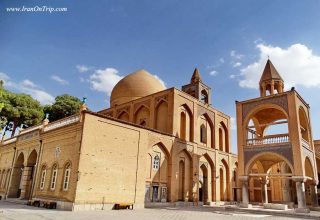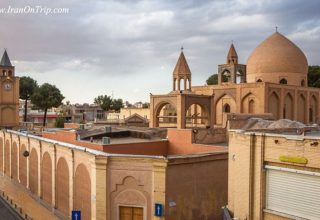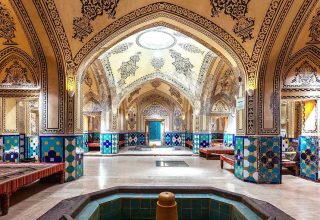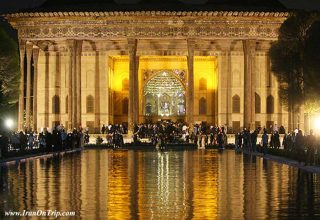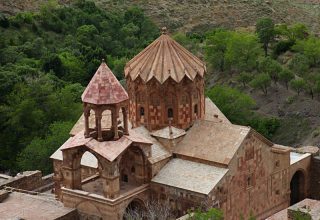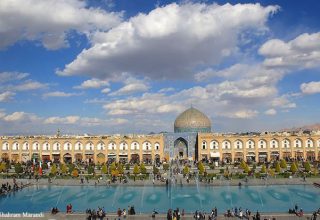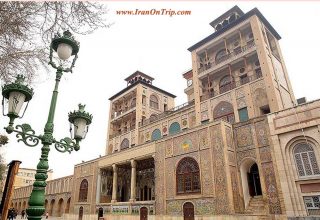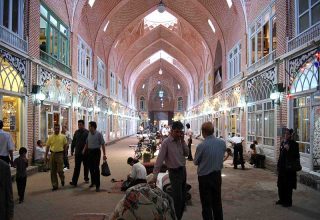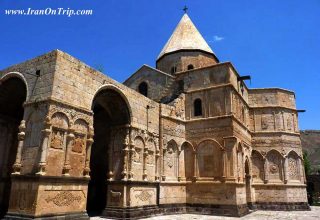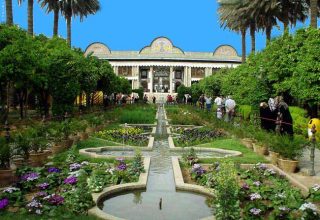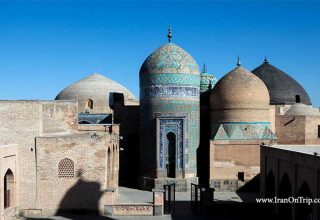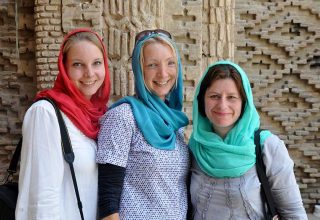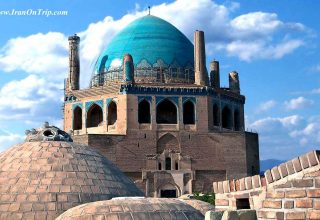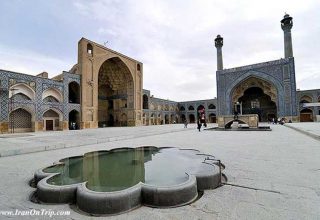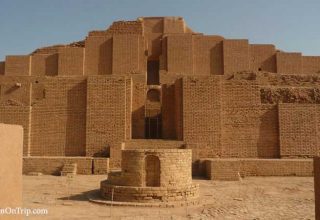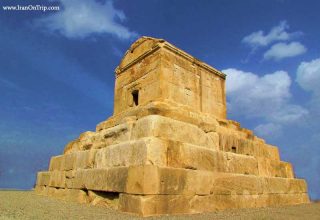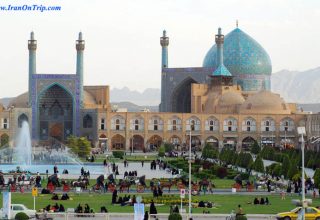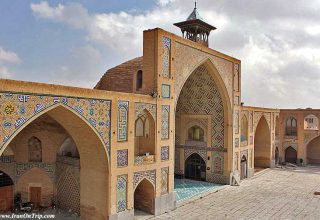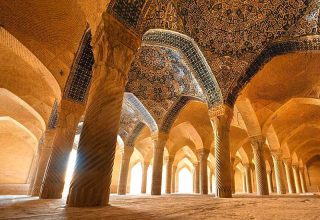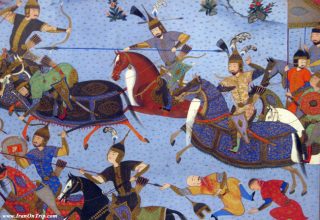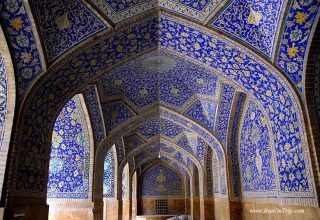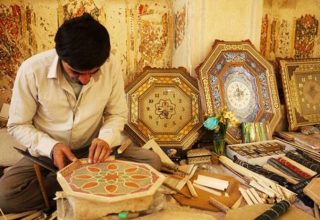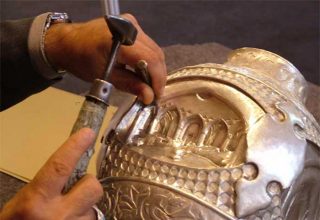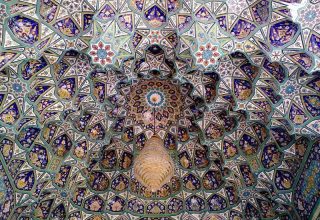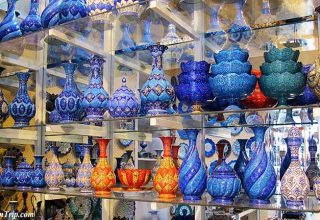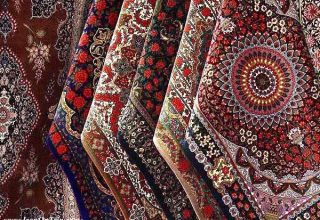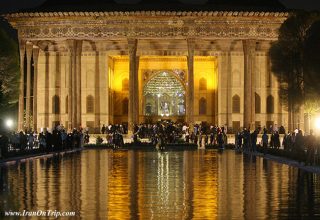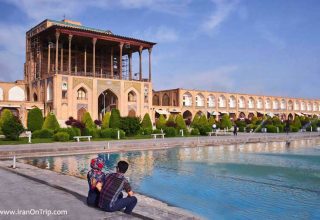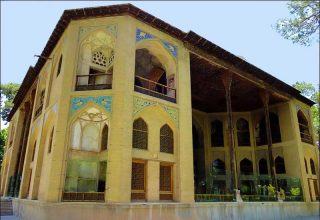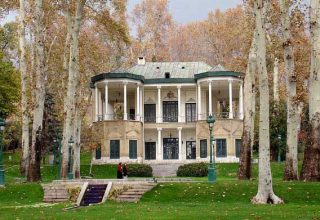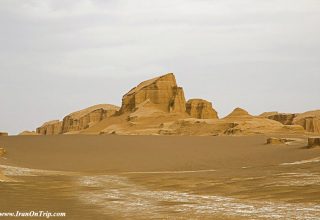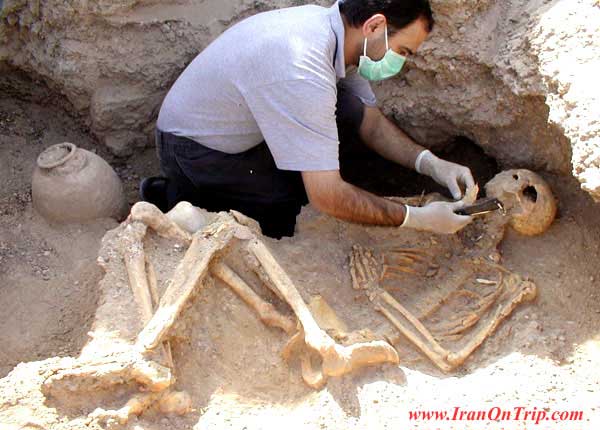
Iran’s Burnt City
Shahr-e Sokhta: The remains of this mud brick city called hahr-e-Sukhteh (Burned City) is the first example of a series of complex societies in eastern Iran. It is a sizable archaeological site of the Bronze Age urban settlement, which is clearly associated with the Jiroft culture
Shahr-e Sokhta (Burnt City)
Iran’s ‘Burnt City’, a Bronze Age archeological treasure trove, was once one of the world’s largest communities at the dawn of urban settlement. The city, called Shahr-e-Sookhteh, sits on the banks of the Helmand river along the Zahedan-Zabol road in the southeast province of Sistan.
Covering an area of 151 hectares, the city was built around 3200 BC and abandoned over a millennium later in 2100 BC. The city experienced four stages of civilization and was burnt down three times. It took its eventual named because it was never rebuilt after the last fire. The site was discovered in 1967 and has been continually excavated since the 1970s by Iranian and Italian archaeological teams; new discoveries are reported from time to time.
The oldest known backgammon, dice and caraway seeds and numerous metallurgical finds, such as pieces of slag and crucible, are among the city’s excavated artifacts. The unearthed game of backgammon is made of 60 pieces from turquoise and agate, and has a rectangular ebony board.
Other objects found at the site include a human skull with signs that suggest brain surgery was conducted on it in this prehistoric city.
The striking find reminds one of “The Story of Sinuhe”, written in hieroglyph during the Egyptian Middle Kingdom around 2000 BC, in which Sinuhe, an Egyptian nobleman and a physician in the court of Amenemhet I, gives an account of open brain surgeries. The unearthed skull in Iran’s Burnt City has discredited the belief based on Sinuhe’s account that brain surgery originated in Egypt.More than 600 skeletal remains have also been unearthed so far from the Burnt City’s necropolis. The remains had been buried in more than 108 graves with some of the remains grouped together into graves containing three to eight bodies. At least two of the multiple graves were family plots apparently intended for family members who had died within a short period of time of each other.
The deceased residents of the Burnt City were buried in different positions – some were buried prostrate, some in a supine position and some lying on one-side. The most frequent position in burial was to lay the corpse on its side or to position the body into a kind of squat. Scientists believe that the variety in burial methods implies that different cultures coexisted within one society at the Burnt City.
• In December 2006, archaeologists discovered the world’s earliest artificial eyeball. It has a hemispherical form and a diameter of just over 2.5 cm (1 inch). It consists of very light material, probably bitumen paste. The surface of the artificial eye is covered with a thin layer of gold, engraved with a central circle (representing the iris) and gold lines patterned like sun rays. The female remains found with the artificial eye was 1.82 m tall (6 feet), much taller than ordinary women of her time. On both sides of the eye are drilled tiny holes, through which a golden thread could hold the eyeball in place. Since microscopic research has shown that the eye socket showed clear imprints of the golden thread, the eyeball must have been worn during her lifetime. The woman’s skeleton has been dated to between 2900 and 2800 BCE.
• The oldest known backgammon, dice and caraway seeds, together with numerous metallurgical finds (e.g. slag and crucible pieces), are among the finds which have been unearthed by archaeological excavations from this site.
• Other objects found at the site include a human skull which indicates the practice of brain surgery and an earthen goblet depicting what archeologists consider to be the first animation.
In one of the most recent discoveries from January, a team of Iranian and British anthropologists, working on human remains in the city from the 3rd millennium BC, identified a male camel rider who they believe was a messenger in ancient times.Studies of the skeletal remains belonging to the man reveal evidence of bone trauma, suggesting that he was a professional rider who most likely spent most of his life on camel back.
Indications of riding are seen on the right leg bone of the man, who died at the age of 40 to 45. The swellings show that he continuously worked as a professional rider since he was a teenager. There are blade-shaped swellings on the lower part of the leg bone which indicate that he used to gather up his right leg while riding, suggesting that he rode on a large animal like a camel or ox. Although there is evidence showing that smaller draft animals were also used in the Burnt City, the act of gathering up a leg while riding is something that one does while riding a camel over long distances. Scientists, then, believe that the man was probably a courier who traveled regularly on camelback.
Some paleoanthropologists believe that mothers in the Burnt City had social and financial prominence. 5000 year-old insignias, made of river pebbles and believed to belong only to distinguished inhabitants of the city, were found in the graves of some female citizens. Some believe the female owners of the insignias used them to place their seal on valuable documents. Others believe the owners may have used the seal to indicate their lofty status in society.
Paleopathological studies on 40 teeth unearthed in the Burnt City’s cemetery show that the inhabitants of the city used their teeth as a tool for weaving to make baskets and other handmade products.
“More than 40 teeth lesions have been identified, the most prominent of which belongs to a young woman who used her teeth as a tool for weaving baskets and similar products,” said Farzad Forouzanfar, director of the Anthropology Department of Iran’s Archeology Research Center and head of the anthropology team at the Burnt City in an interview with CHN.
The use of teeth as a tool in the Burnt City is seen in both males and females of different age groups. Evidence shows that weaving was more than a hobby in the prehistoric city. It was one of the most common professions in the city which required a special skill. Residents made a variety of woven products such as carpets, baskets, and other household items.Studies are currently underway by anthropologists from Iran’s Archeology Research Center and England’s Newcastle University. The scientists hope to study bone fragments and teeth found in various parts of the Burnt City, especially those unearthed in its cemetery, which may unravel the mysteries over some of the most common occupations practiced by the region’s inhabitants.
The reasons for the unexpected rise and fall of the Burnt City are still wrapped in mystery. What seems especially bizarre about the city is its incongruity with nearby civilizations of the time. It is as if the city just appeared out of nowhere. Shahr-e-Sookhteh could eventually be the evidence to prove that an ancient civilization to the east of prehistoric Persia was independent from the civilization of ancient Mesopotamia.
The excavations at the Burnt City also suggest that the inhabitants were a race of civilized people who were both farmers and craftsmen. No weapon has ever been discovered at the site, suggesting the peaceful nature of the residents.
The Golden-eyed Woman
In December 2006, archaeologists discovered the world’s earliest artificial eyeball in the city’s necropolis, thought to have been worn by a female resident of the Burnt City. The artificial eye is a hemisphere with a diameter of just over 2.5 cm (1 inch). It consists of very light material, probably bitumen paste. The surface of the artificial eye is covered with a thin layer of gilding and is engraved with a circle at its center to represent the iris. The eye includes gold lines patterned like the rays of the sun. A hole has been drilled through the eyeball, through which a golden thread is thought to have held the eyeball in place.
Microscopic research has revealed that the eye socket of the female remains bear clear imprints of the golden thread, suggesting that the woman must have worn the eyeball during her lifetime. With her shining golden eye she must have been a striking figure, perhaps a soothsayer or an oracle. The woman with the artificial eye was 1.82 m tall (6 feet), much taller than the average women of her time. She was aged between 25 and 30 and had dark, exotic skin. Her Africanoid cranial structure suggests her origins were the Arabian Peninsula.
Experts say that her skeleton dates to between 2900 and 2800 BC, when the Burnt City was a bustling, wealthy city and trading post at the crossroads of the East and the West. It is thought that the woman may have arrived at the city on a caravan from Arabia. Archeologists have not yet revealed the cause of the woman’s death.
The Ancient Courier
In one of the most recent discoveries from January, a team of Iranian and British anthropologists, working on human remains in the city from the 3rd millennium BC, identified a male camel rider who they believe was a messenger in ancient times.Studies of the skeletal remains belonging to the man reveal evidence of bone trauma, suggesting that he was a professional rider who most likely spent most of his life on camel back.
Indications of riding are seen on the right leg bone of the man, who died at the age of 40 to 45. The swellings show that he continuously worked as a professional rider since he was a teenager. There are blade-shaped swellings on the lower part of the leg bone which indicate that he used to gather up his right leg while riding, suggesting that he rode on a large animal like a camel or ox. Although there is evidence showing that smaller draft animals were also used in the Burnt City, the act of gathering up a leg while riding is something that one does while riding a camel over long distances. Scientists, then, believe that the man was probably a courier who traveled regularly on camelback.
Women’s Role
Some paleoanthropologists believe that mothers in the Burnt City had social and financial prominence. 5000 year-old insignias, made of river pebbles and believed to belong only to distinguished inhabitants of the city, were found in the graves of some female citizens. Some believe the female owners of the insignias used them to place their seal on valuable documents. Others believe the owners may have used the seal to indicate their lofty status in society.


